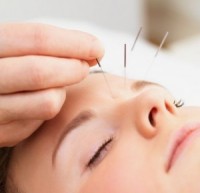Alternative Treatments
The National Institutes of Health defines complementary and alternative medicine (CAM) as a group of diverse medical and health care systems, practices, and products that are not presently considered to be a part of conventional medicine. CAM therapies used alone are often referred to as ‘alternative’. When used in addition to conventional medicine, they may be referred to as ‘complementary’. The list of what is considered to be CAM changes continually, as those therapies that are proven to be safe and effective become adopted into conventional health care and as new approaches to health care emerge.
Americans spend more than $1 billion a year on nontraditional treatments for arthritis. The reasons for seeking CAM treatments vary – many people want relief for pain and suffering that traditional medications have not provided; they hope to avoid potentially serious side effects associated with such medications; and certain conventional medical and surgical treatments cost more than many of us can afford.
Although there has been no rigorous scientific evidence to support the use of CAM by people with ankylosing spondylitis (AS) and its related diseases, some patients have benefited from such treatments. Prior to beginning any new treatment (whether it be traditional or CAM), it is important to discuss the therapy with all of your doctors.



